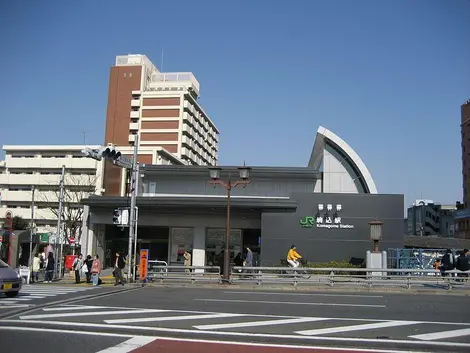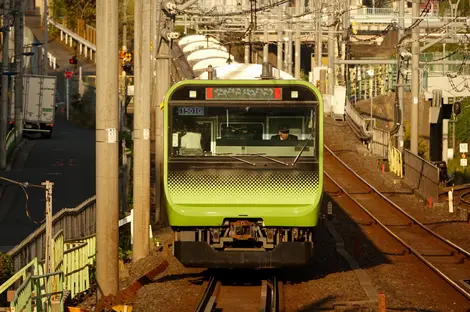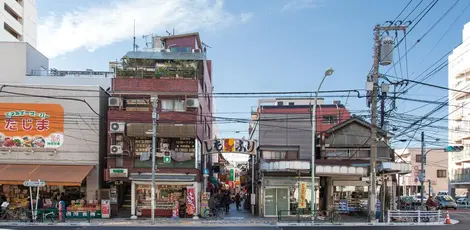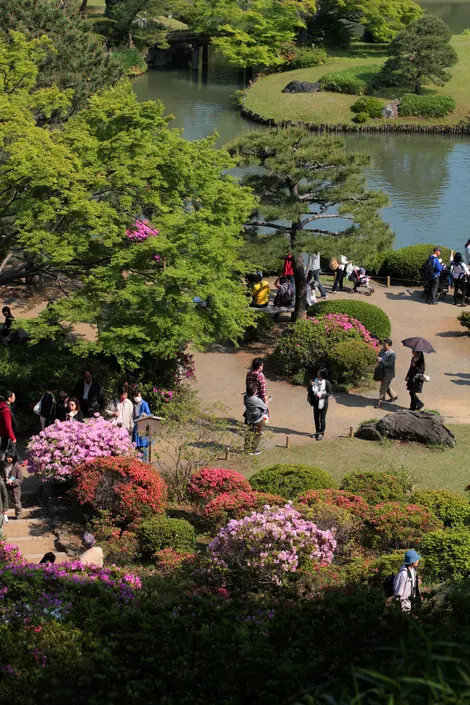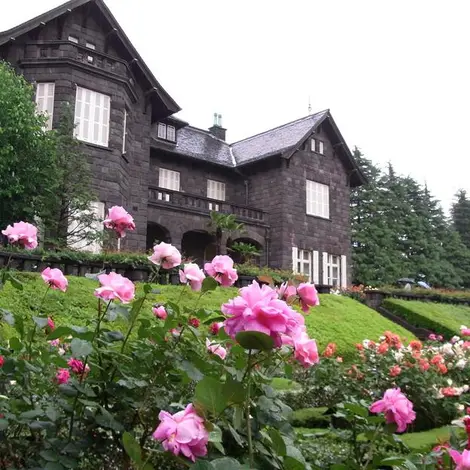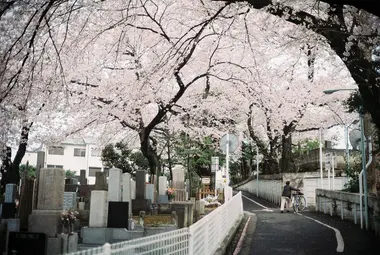Komagome station
Nestled in Tokyo's Toshima district, Komagome station (駒込駅) is a real gem on the famous Yamanote line. Inaugurated on November 15, 1910, this station is distinguished by its natural charm and peaceful atmosphere. Served by the JR Yamanote line and Tokyo Metro's Namboku line, Komagome offers travelers a unique experience, blending history, nature and modern conveniences. Located in a quiet yet attractive neighborhood, this station is the ideal starting point for exploring Tokyo's hidden treasures.96--
Komagome station overview
Komagome station stands out for its verdant surroundings, earning it the nickname "Azalea Station". As soon as passengers arrive on the platforms, they are greeted by magnificent azalea bushes on either side, offering an enchanting spectacle, particularly in spring when they are in full bloom. This harmonious integration of nature into urban space makes Komagome a unique station on the Yamanote line.
Located in the eastern part of Toshima district, the station is strategically positioned for easy access to many of Tokyo's most interesting districts. Despite its modest size, Komagome plays an important role in the capital's transportation network, offering residents and visitors efficient connections to the city center and other key areas.
Station history and features
The history of Komagome station dates back to the Edo period, when the area was prized by feudal lords as a place to establish their residences. This rich history is still reflected today in the charm and atmosphere of the area. The station itself, built in 1910, has preserved its historic character while adapting to modern needs.
A unique feature of Komagome is the only level crossing on the entire Yamanote line, located some 400 meters from the station on the way to Tabata station. This fumikiri, as it's known in Japanese, offers train enthusiasts and photographers a rare opportunity to capture the essence of the Japanese railway system in action.
The station is also known for its "JR Melody", the tune that announces the closing of the doors. At Komagome, this melody is "sakura, sakura", a traditional Japanese song dating back to the Edo period, reinforcing the station's link with Japan's cultural history.
Rail services
Komagome station offers efficient rail service on two major lines:
- JR Yamanote line: Tokyo's iconic circular line provides passengers with easy access to the capital's main districts.
- Tokyo Metro's Namboku line: This subway line provides fast connections to other parts of the city.
In terms of services, the station boasts modern facilities to meet travelers' needs. However, it should be noted that since 2013, there are no longer any "Midori no Madoguchi" ticket sales areas at Komagome. For these services, passengers must go to the next station, Sugamo.
The high frequency of trains on the Yamanote line guarantees smooth, fast travel. What's more, the view of the JR Tōhoku line's high-speed trains passing off the station is a popular sight for train enthusiasts.
The Komagome district and its attractions
The area surrounding Komagome station is a charming blend of tradition and modernity. Known for its tranquility and greenery, it offers an authentic experience of Tokyo life, far removed from the hustle and bustle of the more touristy areas.
One of the district's major attractions is Shimofuri Ginza, a shopping mall located just 5 minutes' walk from the station. Since 1956, this 250-metre-long gallery has been home to 58 stores offering a variety of products, from fishmongers and bakeries to restaurants and cafés. It's a lively and endearing place, imbued with nostalgia, that perfectly reflects the atmosphere of the neighborhood.
The district is also famous for its connection with the history of cherry trees in Japan.
Indeed, it was here that the "Somei Yoshino" cherry variety, the most popular in Japan, was first created around 1720.
This history lives on in the Somei Reien Cemetery, where cherry trees put on a magnificent show every spring, bringing the area to life in spectacular fashion.
Rikugien Garden: a must-see nearby
The Rikugi-en Garden is undoubtedly the star attraction near Komagome station. Created between 1695 and 1702 by Yanagisawa, a relative of the 5th Shogun Tokugawa Tsunayoshi, this Japanese garden is a true landscaped masterpiece. Its name, meaning "Garden of Six Poems", refers to its design inspired by Waka poetry.
The garden is renowned for its seasonal beauty:
- In spring, azaleas and weeping cherry trees offer a dazzling spectacle.
- In autumn, the colors of the koyo transform the landscape into a palette of reds and yellows.
Rikugi-en is particularly famous for its seasonal illuminations. The spring and autumn illuminations attract many visitors, creating a magical and unforgettable atmosphere.
The garden is open daily from 9 a.m. to 5 p.m., with an entrance fee of 300 yen for adults, 150 yen for over-65s, and free for children under 12.
Other points of interest around the station
In addition to Rikugi-en Garden, there are several other attractions worth a visit in the vicinity of Komagome station:
Kyû Furukawa Teien Garden : This unique garden blends Western and Japanese styles. Created in the early Meiji era, it features a Western-style stone house and a traditional Japanese garden. Open daily from 9 a.m. to 5 p.m., admission costs 150 yen for adults and 70 yen for over-65s.
Somei Village: Although largely absorbed by modern urban development, this historic site is the birthplace of the famous Somei Yoshino cherry variety. A stroll through this district reveals Tokyo's fascinating horticultural history.
The unique level crossing: Located some 400 meters from the station, this is the only level crossing on the entire Yamanote line. It's a great spot for train enthusiasts and photographers, especially in the late afternoon when the light is ideal.
Komagome station on the Yamanote line
Komagome station occupies a strategic position on the Yamanote line, one of Tokyo's most important railway arteries. Situated between Sugamo and Tabata stations, it offers easy access to other major stations such as Ikebukuro station to the northwest and Ueno station to the southeast.
The Yamanote line, recognizable by its distinctive green color, forms a loop around the center of Tokyo, linking the city's main centers of activity. Discover the Yamanote, this iconic line that offers travelers a panoramic view of Tokyo's diversity, from business districts to bustling shopping areas.
For visitors, Komagome station represents an ideal gateway to a quieter, more traditional Tokyo, while remaining perfectly connected to the rest of the city thanks to the efficiency of the Yamanote line. Whether exploring the peaceful gardens, discovering the history of Japanese cherry trees, or simply enjoying the unique atmosphere of this district, Komagome offers an authentic and enriching experience in the heart of Japan's capital.







